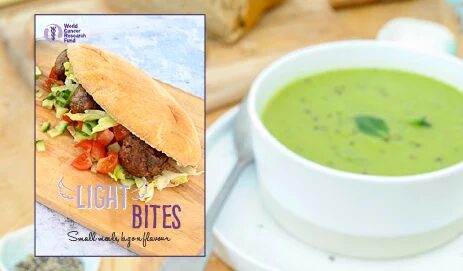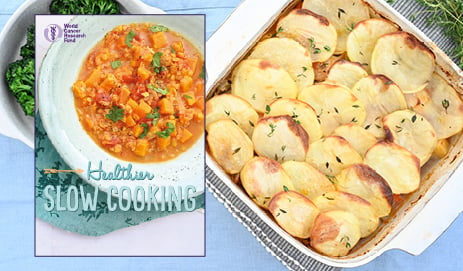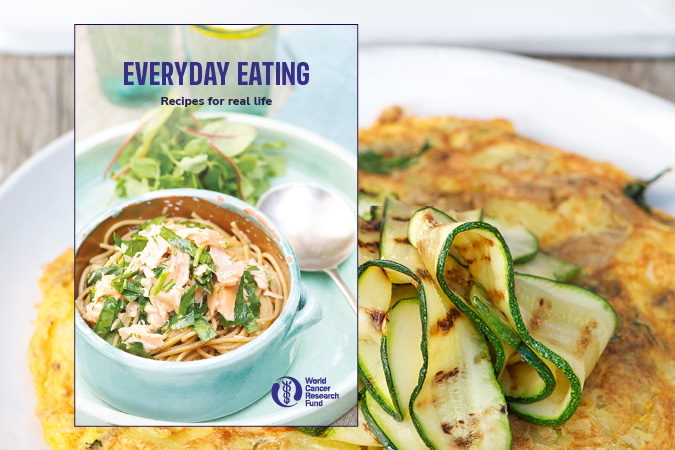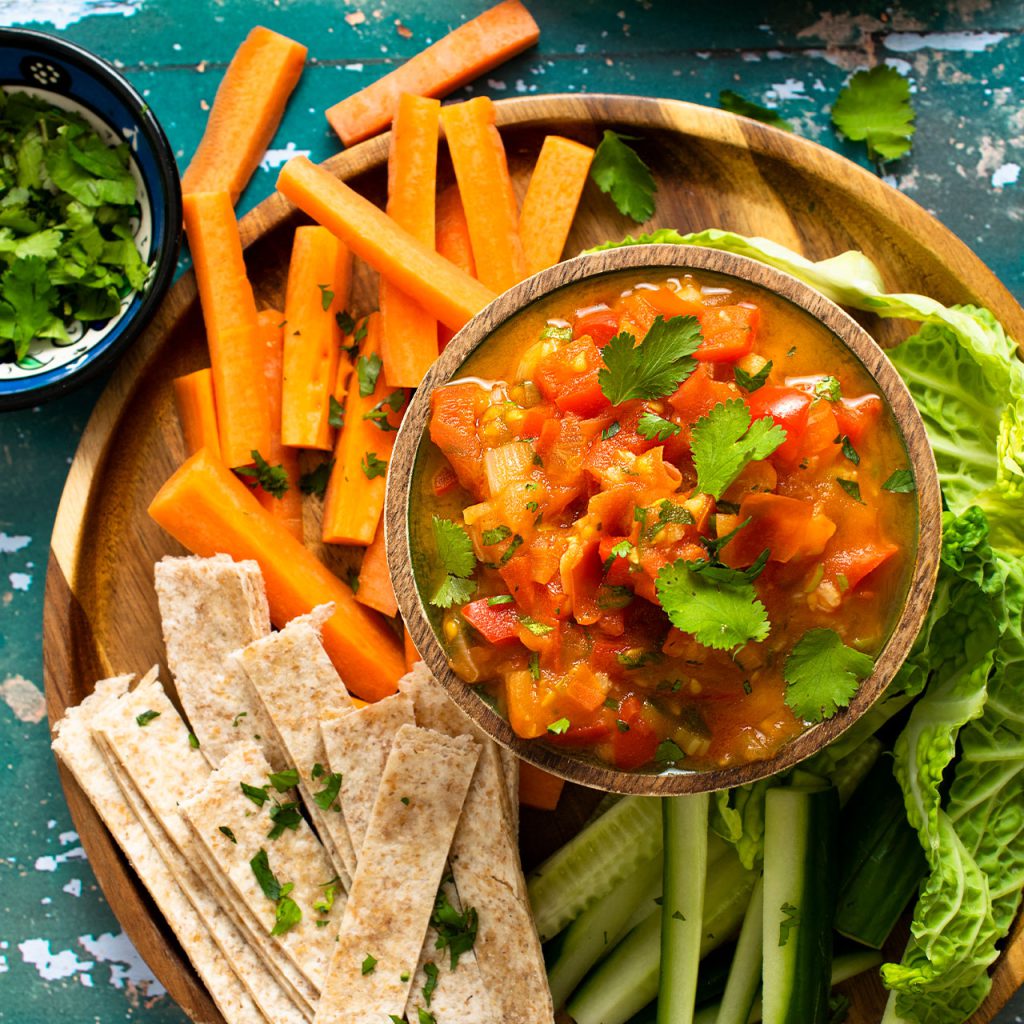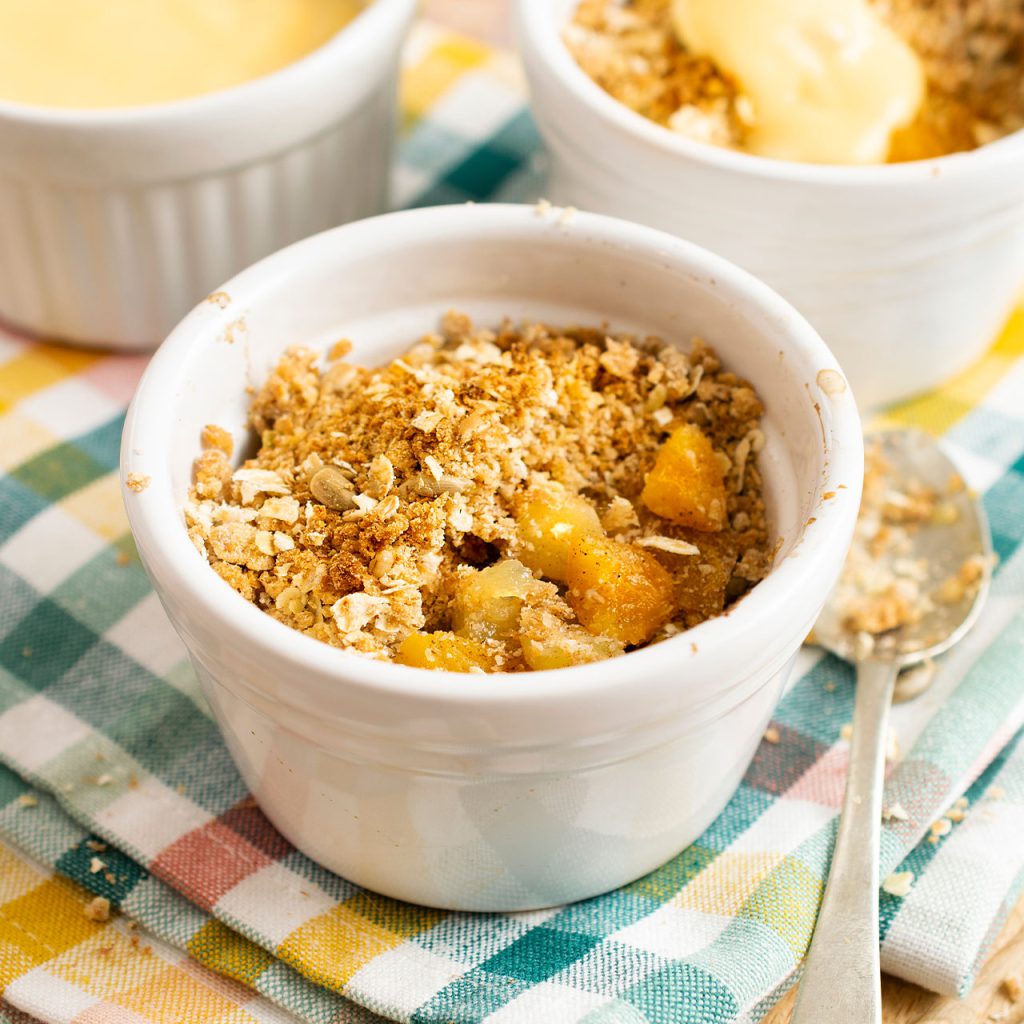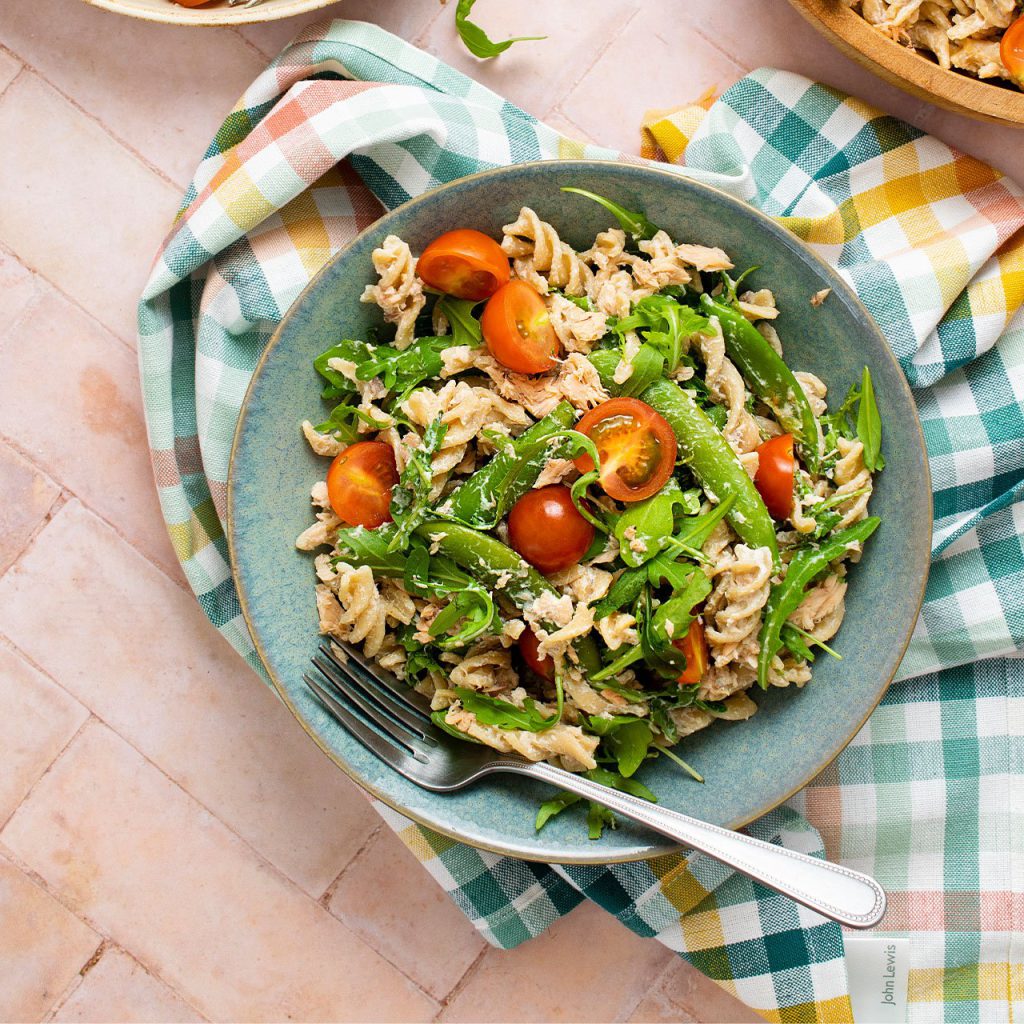List of vegetables from A to Z
From asparagus to yam, vegetables are very versatile! Many vegetables can be eaten raw, or why not roast, pickle, stir fry or blend into soup?
On this page
FAQs about fruit and veg
-
What’s the difference between a fruit and a vegetable?
Botanically, a fruit develops from the flower of a plant and contains seeds – so tomatoes, cucumbers and even courgettes are technically fruit.
Vegetables, on the other hand, are other edible parts of the plant, like roots (carrots), stems (celery) and leaves (spinach).
In the kitchen, we usually go by taste: fruits are typically sweet or tangy, while vegetables are more savoury. So, even if a tomato is a fruit by science, we treat it as a vegetable in cooking.
-
Are vegetables better for you than fruit?
Both fruit and vegetables are important for a healthy, balanced diet. They’re rich in vitamins, minerals, fibre and natural plant compounds that support your health.
Some studies suggest that vegetables may have a slight edge when it comes to nutrient density, offering more nutrients per calorie – while fruit tends to be higher in antioxidants.
The best approach? Enjoy a variety of both to get the full range of benefits.
-
Do I really need to eat 5 A DAY?
Yes, aiming to eat at least 5 portions of fruit and vegetables each day is recommended in the UK. This is because it provides us with essential vitamins, minerals and fibre that support our health and cancer risk.
A portion is roughly 80g – around one handful. This can include fresh, frozen, tinned (in water or natural juice), dried (30g) or juiced (150ml).
-
How many of my 5 A DAY should be vegetables?
There’s no strict rule on how many of your 5 A DAY should be vegetables, so a mix of both fruit and veg is best. Eating a colourful variety provides a wide range of nutrients and fibre, which supports your overall health and reduces your cancer risk.
-
What doesn’t count as 1 of my 5 A DAY?
Potatoes, yams, cassava and plantains don’t count because they’re classified as starchy carbohydrates. They’re great for energy, but not part of your 5 A DAY. However, sweet potatoes do count.
Some food only counts as 1 of your 5 A DAY, no matter how much you eat or drink:
- Beans and pulses (like lentils or chickpeas) only count as 1 portion per day, even if you have more.
- Fruit or vegetable juice (125ml) also only counts as 1 portion.
Asparagus
Asparagus are long, green spears with little buds at the top. They’re easy to cook and taste great roasted, grilled or lightly steamed. Perfect with a drizzle of olive oil or dipped into a soft-boiled egg.
> Try our muffin with asparagus, egg and Hollandaise
Beetroot
Beetroot is a round, deep red root vegetable (though golden ones exist too). It has a sweet, earthy flavour and can be roasted, boiled, or even grated raw into salads. It is also popular pickled or blended into smoothies and cakes.
> Try our chocolate beetroot muffins
Carrots
Carrots are bright orange (though they also come in purple and yellow) with a naturally sweet crunch. They’re great raw in salads or lunchboxes, and equally delicious roasted, boiled or added to soups and stews.
> Try our roasted carrots with orange, lemon and tabbouleh
Dill
Dill is a soft, feathery herb with a fresh, slightly aniseed-like flavour. It’s great with fish, potatoes, and pickles and adds a lovely kick to dips and dressings. Use fresh for best flavour.
Endive
Endive looks like a cross between lettuce and chicory, with slightly bitter leaves. It’s often added to salads for a bit of bite, but you can also grill or roast it to mellow the flavour.
Fennel
Fennel has a white bulb with green fronds on top. It smells a bit like liquorice and has a crisp texture when raw. Slice it into salads, or roast it until soft and sweet. The fronds can be used like a herb.
Garlic
Garlic comes as a bulb made up of smaller cloves. It’s strong and punchy when raw, but sweet and mellow when cooked. A must-have in the kitchen – roast it, fry it, or use it to add depth to almost any savoury dish.
Haricot beans
These small white beans are mild in flavour and creamy when cooked. You’ll find them in baked beans and classic French dishes. Use them in soups, stews or salads – tinned or dried.
Iceberg lettuce
Iceberg is a crisp, round lettuce with pale green leaves and a cool crunch. It’s a classic in salads, sandwiches and burgers. Not the most exciting in flavour, but great for texture.
Jerusalem artichoke
Despite the name, it’s nothing like a regular artichoke! These are knobbly tubers, a bit like ginger in shape. Roast them like potatoes and they develop a sweet, nutty flavour.
Kale
Kale is a dark green leafy veg that’s packed with nutrients like iron. It’s quite firm and slightly bitter raw but softens nicely when cooked. Try it in soups, stir-fries or even roasted into crispy snacks.
> Try our roast squash and kale tartlets
Leeks
Leeks look like big spring onions and have a gentle onion flavour. They’re lovely when cooked – think soups, pies or simply braised with some olive oil. Make sure to wash between the layers, as they can be a bit muddy.
> Try our leek and potato Spanish omelette
Mushrooms
Mushrooms come in all shapes and sizes, with a meaty texture and earthy taste. You can fry, grill, roast or add them to just about anything – breakfasts, pastas, stews or sauces.
> Try our basil and mushroom cannelloni with harissa ricotta
Neeps
“Neep” is a Scottish word for swede. It’s a round root veg with yellowy flesh and purple skin. Mildly sweet and earthy, it’s great mashed with butter or roasted. It is traditionally served with haggis.
Onions
Onions are in just about everything. They start out sharp but turn sweet and soft when cooked. Use them raw in salads or caramelised in sauces, stews and soups – red, white or brown, they’re a kitchen essential.
> Try our sweet potato pancakes with carrot and onion
Peas
These little green gems are sweet and tender. Whether fresh or frozen, peas are quick to cook and go with almost anything – great in rice, soups and stews.
> Try our baked salmon with peas and green mayo dressing
Rhubarb
Rhubarb has bright pink stalks and big green leaves (don’t eat the leaves!). It’s tart, so it’s usually cooked with sugar for crumbles, pies or jam. It is technically a vegetable but mostly used like fruit.
Sweet potatoes
Sweet potatoes are orange, starchy and sweet. Roast them, mash them, turn them into chips or add to soups and curries. They’re also great in baking like brownies or muffins.
> Try our baked sweet potato with smoky chickpeas
Turnips
Turnips are round with white and purple skin and have a mild, slightly peppery taste. They can be roasted, mashed or added to soups and stews. Young ones are even nice raw in slaws or salads.
Vine leaves
Vine leaves come from grapevines and are used to wrap tasty fillings like rice and herbs. You’ll find them in Middle Eastern and Mediterranean dishes. They’re tangy and soft once cooked.
Watercress
Watercress is a peppery little leaf that adds a fresh bite to salads and sandwiches. It’s also lovely in soups or served with eggs and potatoes. A bit of a classic in British food.
Yam
Yams are big, starchy tubers with rough skin and dense flesh. They’re not the same as sweet potatoes – these are drier and less sweet. Common in Caribbean and African cooking, they’re usually boiled, fried or mashed.
